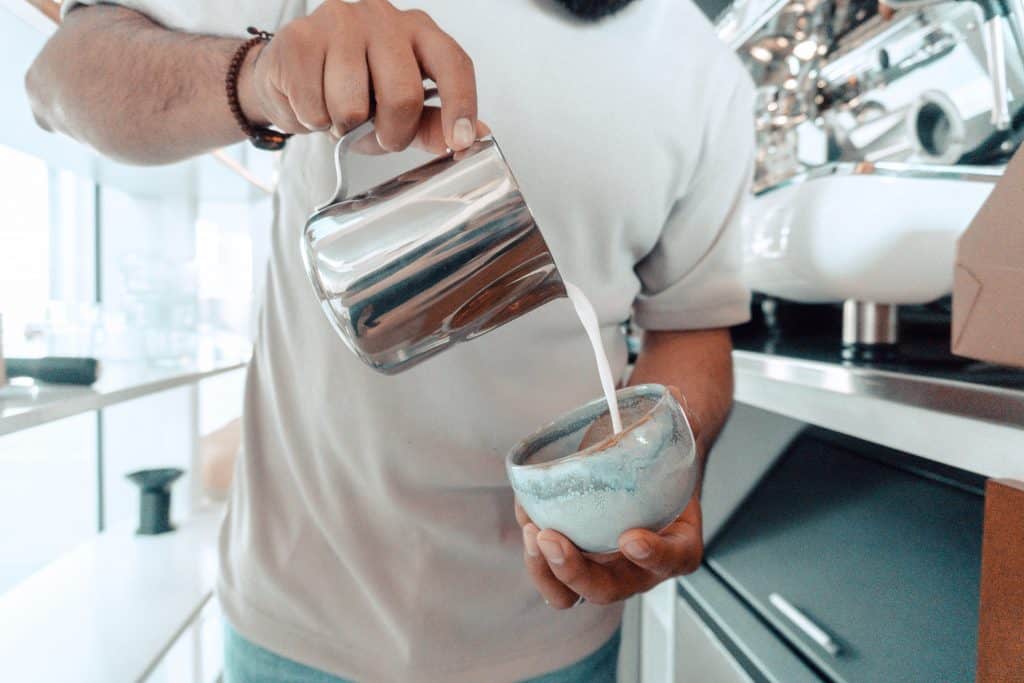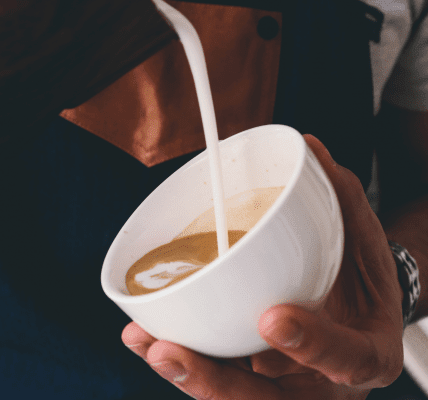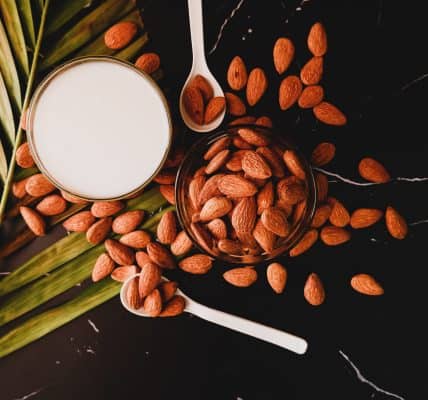
What is a Milk Frother?
Table of Contents
Milk Frothers are small appliances that use an electric motor to froth the milk by moving it around at high speed. This introduces air into the milk (tiny little bubbles, ideally causing what we call a ‘micro foam’).
There’s basically two ways you can make the lovely, sweet, creamy foam that you’re looking for: steamer or Frother. We go on to explain a bit more about the main differences later in this article, but in essence, a steamer will probably give you better results (well, let’s call it ‘different’ results, but you’re going to have more effort, expense, maintenance, learning and difficulty. Have a read below and you might just find that a milk frother might be the way to go for you.
A small milk frother will cost as little as $12 but the cheap devices often do not produce the best results, and worse, the lifespan is short, so we’d normally suggest you budget a bit more than that and enjoy great results for years to come.
What Kind of Milk Should I Use?
If you’re going to froth milk at home at, we highly recommend non-fat milk. This provides the best results when frothing and also will save you money in the long run. This flies in the face of using a steam wand for frothing milk using a steamer, but trust us, you’ll see why. If you’re into your non dairy milks, the we do have an article that explains the best non dairy milk for frothing. For hot cappuccino, use whole milk. Method to our madness? We like to thing so. Try it and let me know.
How much Milk should I use in a milk frother?
For 1 cup of Latte or Cappuccino (6-8 Oz or 170 to 230ml), start with one ounce (30ml) foamed milk onto of 120ml of warm milk (onto of a normal double espresso). This probably isn’t going to cut it if you like a long, milky coffee, so perhaps start here and go upwards (it’s better than making it too milky, throwing it away and starting again). If you do have the luxury of a steam wand and you’re using both steamed and frothed milk, then hit up your espresso shot with 30 ml foamed milk, 90ml steamed milk and your usual double shot (14g to 18g of beans). Once you’re in that ballpark, tweak the amounts until you’re happy. Steamed milk has a lower density (meaning it contains more are and isn’t so ‘heavy’) so you don’t need as much, plus, heating the milk tends to sweeten it, so the mouthfeel is different and you need to balance it with the espresso.
Do all Milk Frothers Work the Same?
Most people think of two types of milk frothers when they want to get into working with milk based coffees: electric and manual. If you’re looking for something cheap and easy, an electric version is likely your best bet (you’ve probably heard of an aero-latte already! Electric frothers are available from a variety of retailers, from Amazon to your local department store, but feel free to contact is if you have questions. Some electric models give you the option to add in chocolate or spices, though this is usually an additional cost to consider.
Manual frothers are much less expensive and often easier for people who don’t want a milk mixer but still want to have some fun with milk foam. Manual models are usually just a whisk that you use to pump air into the milk, making very light foam without any additional equipment, but when I first started messing around with milk based coffee, I just warmed up some milk, added it to a French Press (Cafetiere) to about 30% fill level, and pumped away like a teenage boy. The results weren’t that bad, and for little to no extra expense to your current setup it’s worth a try before you invest in any new kit.
How do I know which Milk Frother is Right for me?
Fr
Of course there’s no perfect answer here. It’s mostly going to be down to trial and error. Not only that, but you’ll probably find that in something situations (you’re short on time, or you’re entertaining guests) you might prefer one approach, bit on another occasion the same thing isn’t going to work for you. There’s no need to be a slave to convention here, so learn what you like and go with it.
What is the Difference between a Milk Steamer and a Milk Frother?
Manual frothers are also commonly referred to as “steamers”. While they both use air and steam to create bubbles, steaming milk uses a different technique to frothing milk. You can steam milk with a steam wand that has two parts, one for the milk and one for the air/steam. Milk steamed with this type of equipment needs to stay in place while it’s being made. This is because the volume of air introduced into the milk doesn’t start until you’ve finished pouring it.
Frothing milk uses a different method that creates microfoam with the help of quick-flowing bubbles. Frothers create bubbles by introducing hot or cold air into the liquid through the whisk in the frother. The result is similar to what you would get at your local coffee shop. Even if you don’t have the same equipment as they do.
How do I clean a Milk Frother?
Electric milk frothers usually come with their cleaning brush to help you remove any leftover bubbles from inside your steamer. You should pay close attention to the whisk or get a specific tool if it doesn’t come with one since this is usually the hardest part to clean by hand.
Milk frothers that are handheld can be difficult to clean, depending on their design. Most steamers with only one end of the wand have ridges that help mix up bubbles into your milk, but it’s still possible for them to get dirty over time. Be sure to check the user manual to see if you need to take additional steps when cleaning out these types of frothers.
Manual frothers are usually very easy to clean by hand, especially if they only have one whisk/steam mix. The process is basically the same for all models: mix hot water and soap inside the mixer and rinse it with regular water. You can boil the frother for a few minutes to make sure you sterilized everything inside for a more thorough cleaning.
How much does a Milk Frother cost?
You can find electric milk frothers for as little as $10 or as much as several hundred dollars, depending on the brand and style. Low-cost electric frothers are usually the smaller “stick” models. While some of the more expensive options include a stand or a base to hold them in place while they’re being used.
Manual milk frothers can run anywhere from $7 up to around $35 for high-quality brands. Some of them come with a stand, but the design is usually one that’s very easy to store or pack up into luggage.
When do I use an Electric Milk Frother?
Electric frothers are most often used in conjunction with espresso machines, so they’re best for people who enjoy drinking lattes or cappuccinos at home. However, it’s also common to use electric frothers in the workplace with a Keurig machine. Some offices will even set out milk frother and additional espresso cups for employees to use during their break times.
Who are Milk Frothers made for?
People who enjoy lattes and cappuccinos can definitely use electric milk frothers, either at home or in the workplace. Public coffee shops with expensive espresso machines will often provide their customers with a free electric milk frother. So they can enjoy these drinks on-site as well.
Manual frothers are best for people who don’t drink lattes or cappuccinos and prefer their coffee black. They’re also great for people who enjoy making drinks with a Keurig or other single-serve machine.
How do I use my Milk Frother?
Electric milk frothers are usually very easy to use because they’re designed with an on/off switch. And along with various heat levels that can be adjusted once you’ve turned it on. You should be able to froth your milk within a few minutes, depending on how hot you like it and if your frother has any additional settings (such as temperature levels).
Manual frothers are easy to use by simply pouring in some cold or hot milk and then pumping the hand mixer. Keep it until it has the right amount of froth. Since there’s no temperature control, you should make sure the milk is warm enough to produce bubbles. But not too hot that it will burn off all of the bubbles.
Conclusion
Milk Frothers are great for adding bubbles to your milk. You can use them along with espresso machines, Keurig machines, or any other single-serve machine. There are both Electric and Manual Milk Frothers available.
Milk frothers usually come with their cleaning brush to help you remove any leftover bubbles from inside the metal chamber. Most frothers are dishwasher-safe, but checking the user manual will tell you for sure whether or not you can put yours in the dishwasher.



